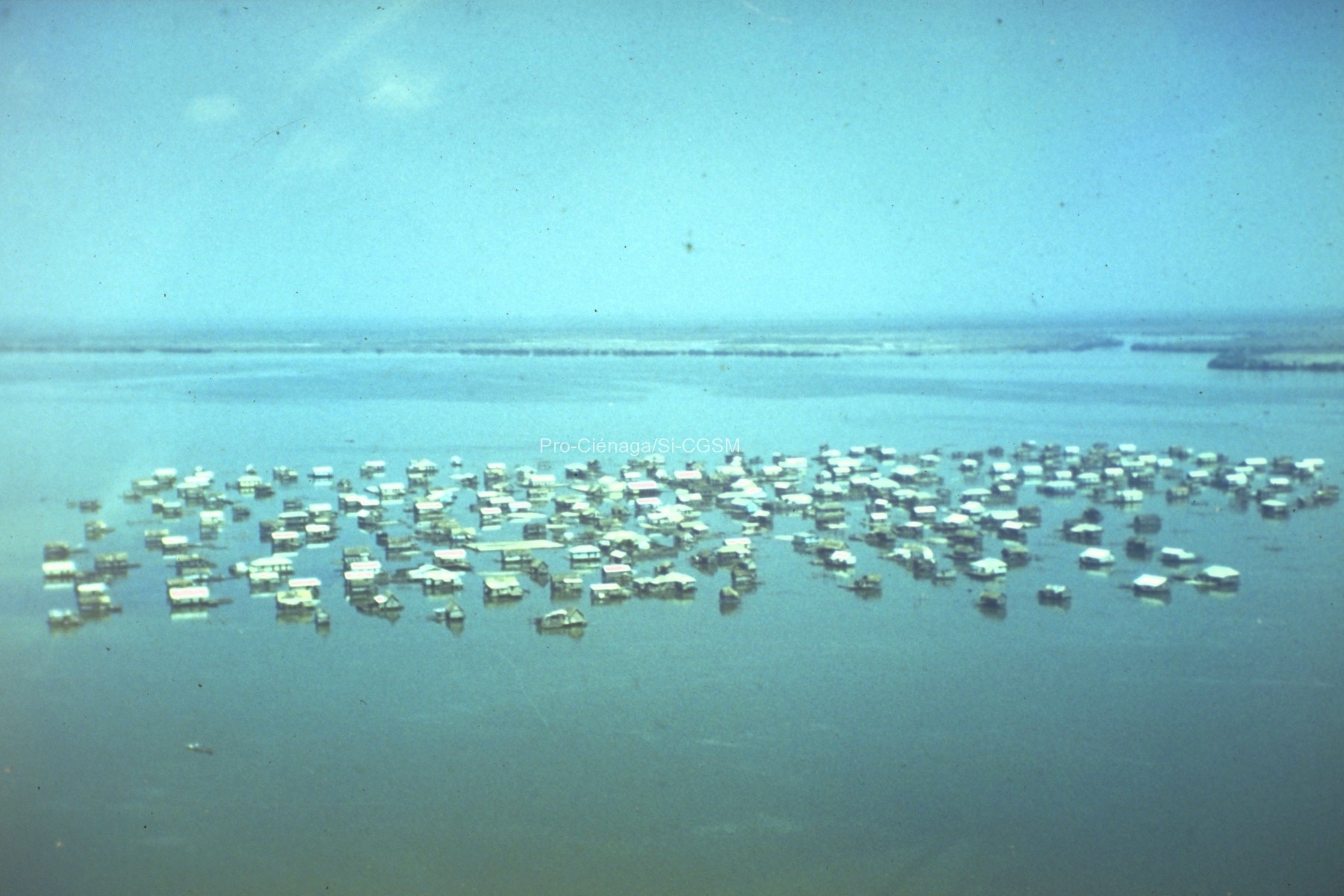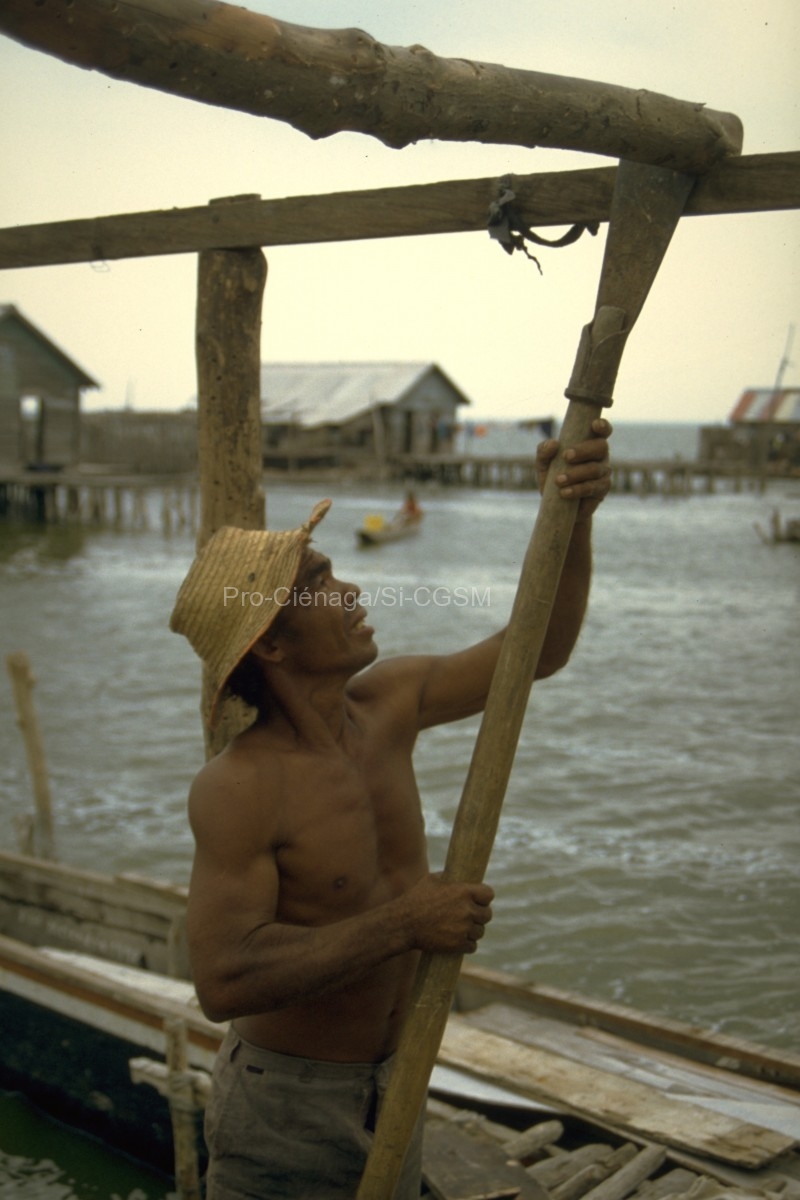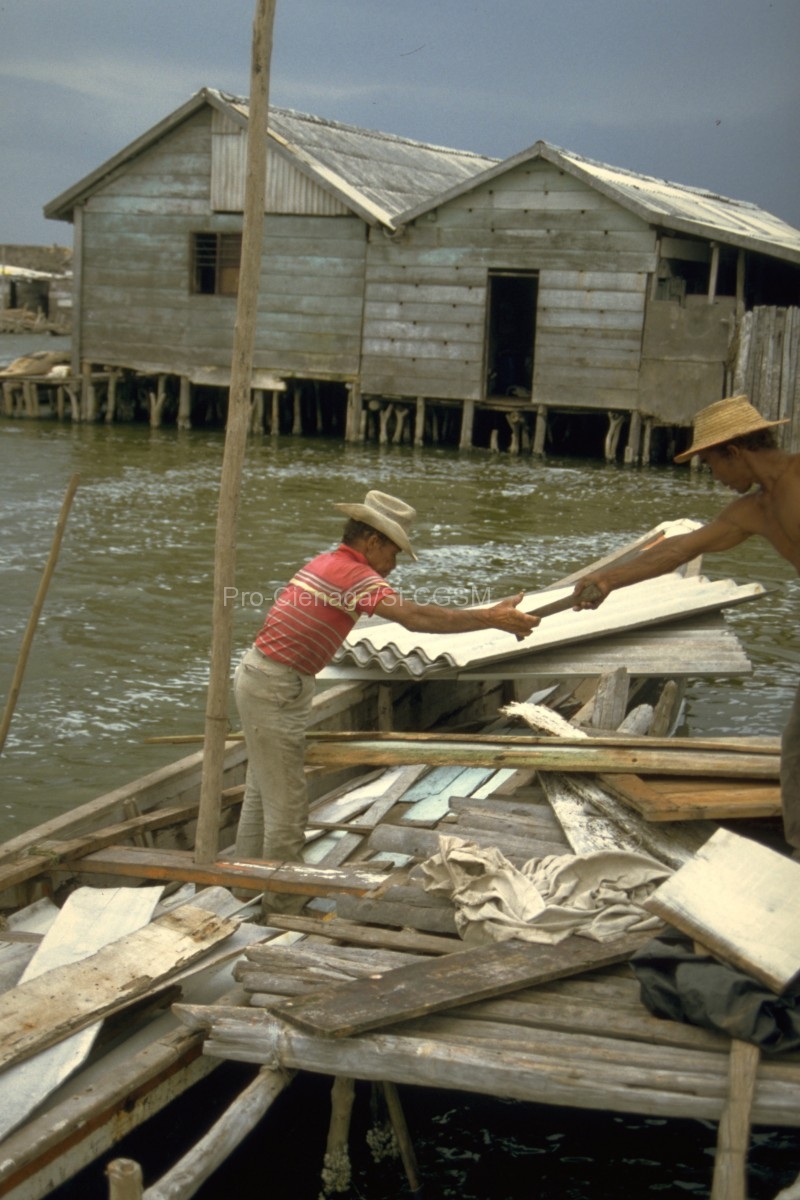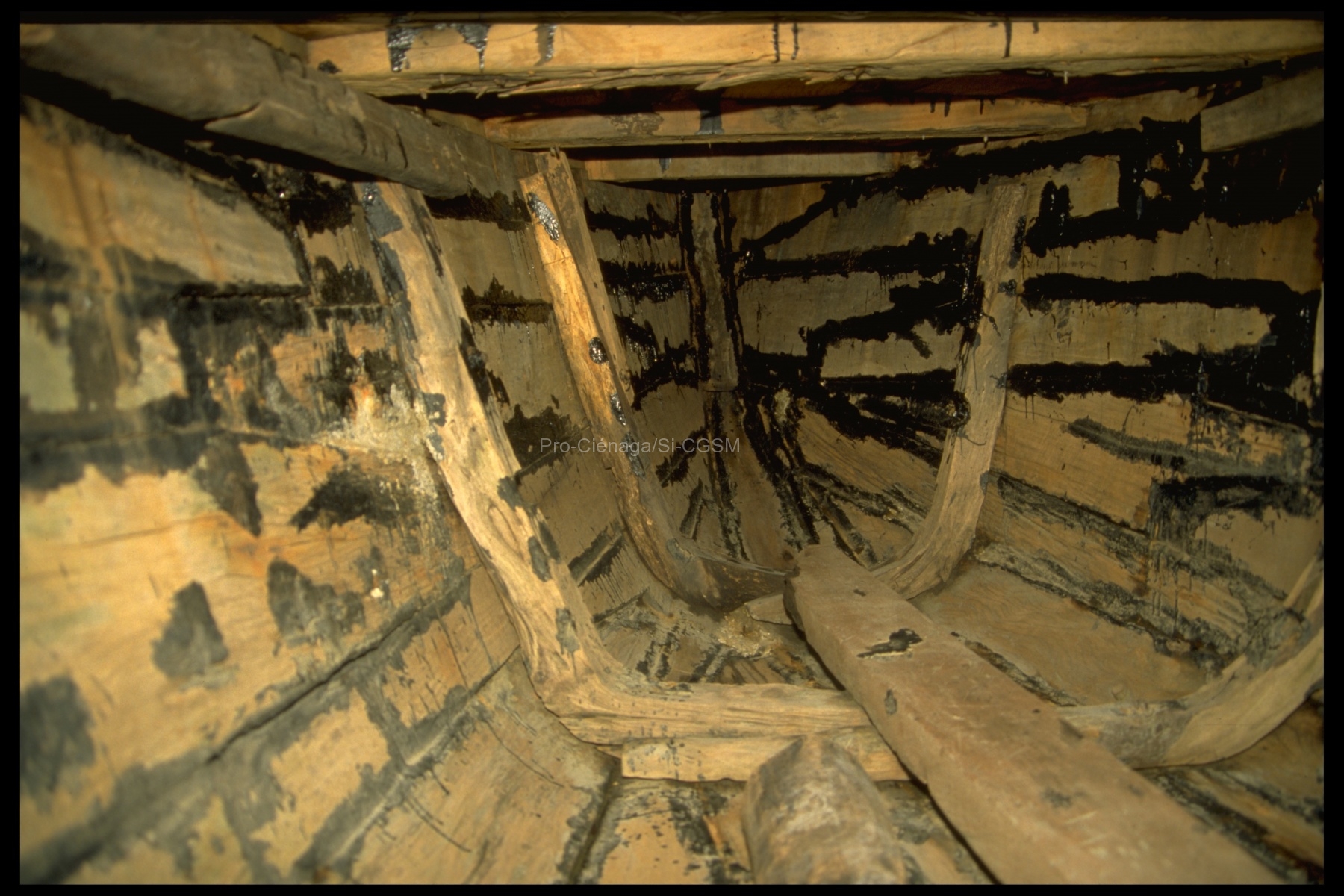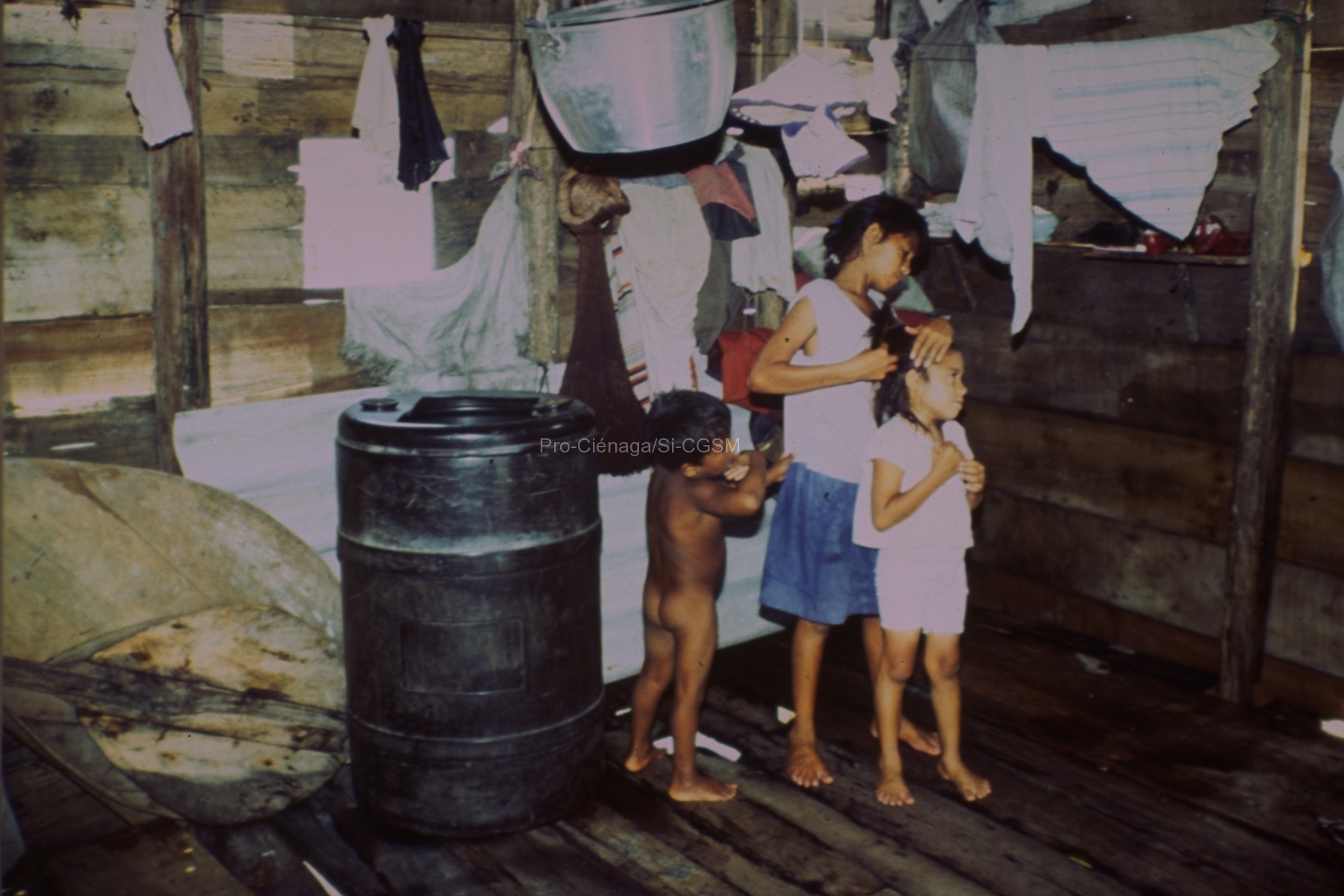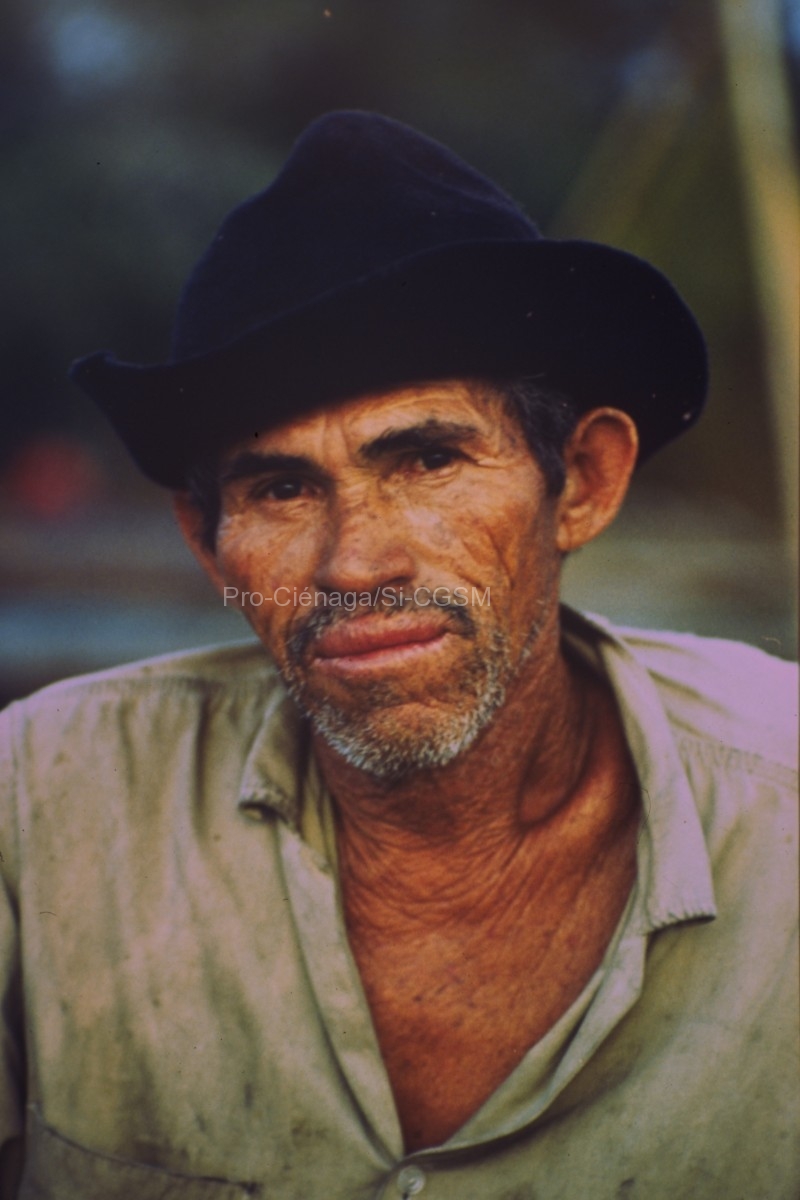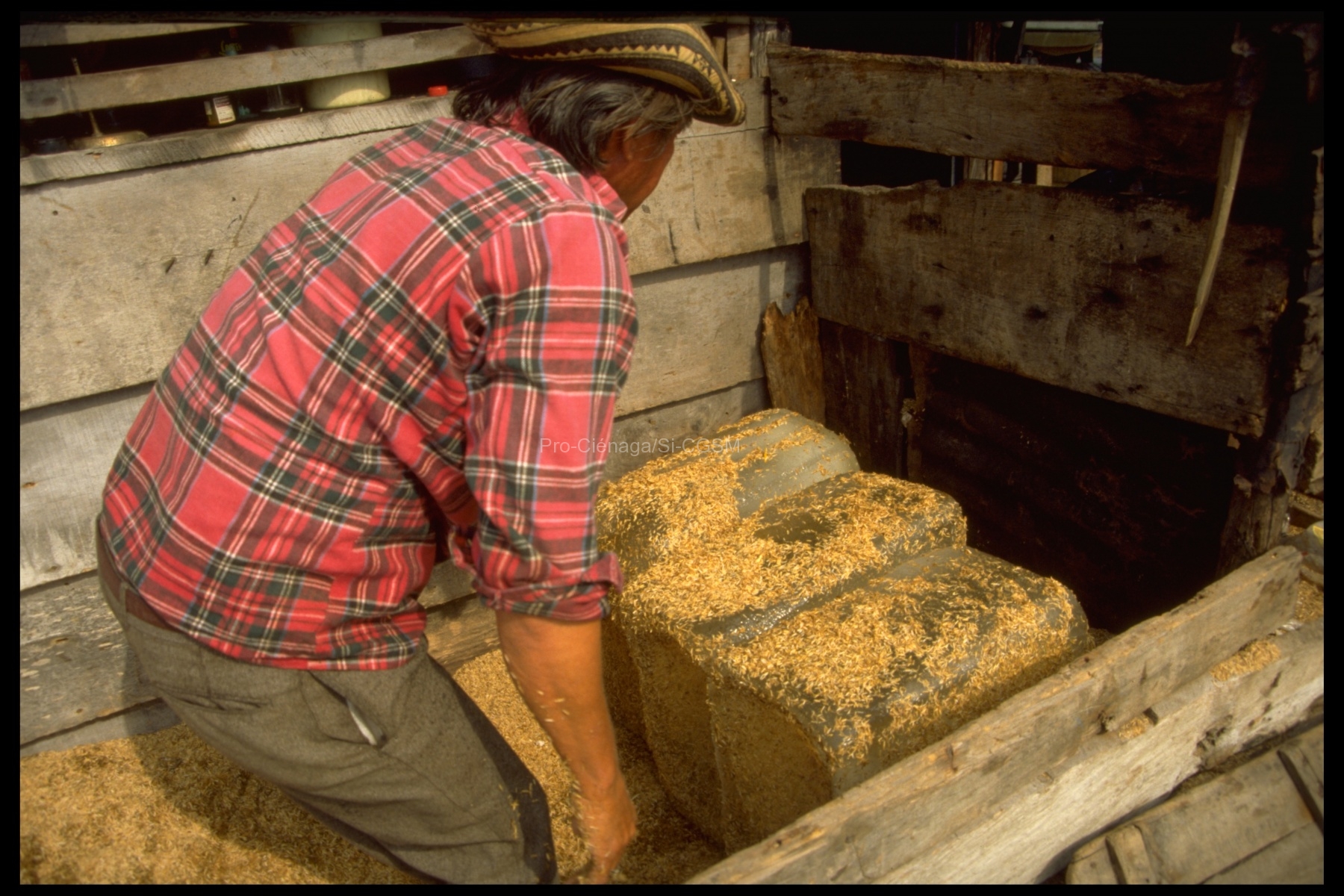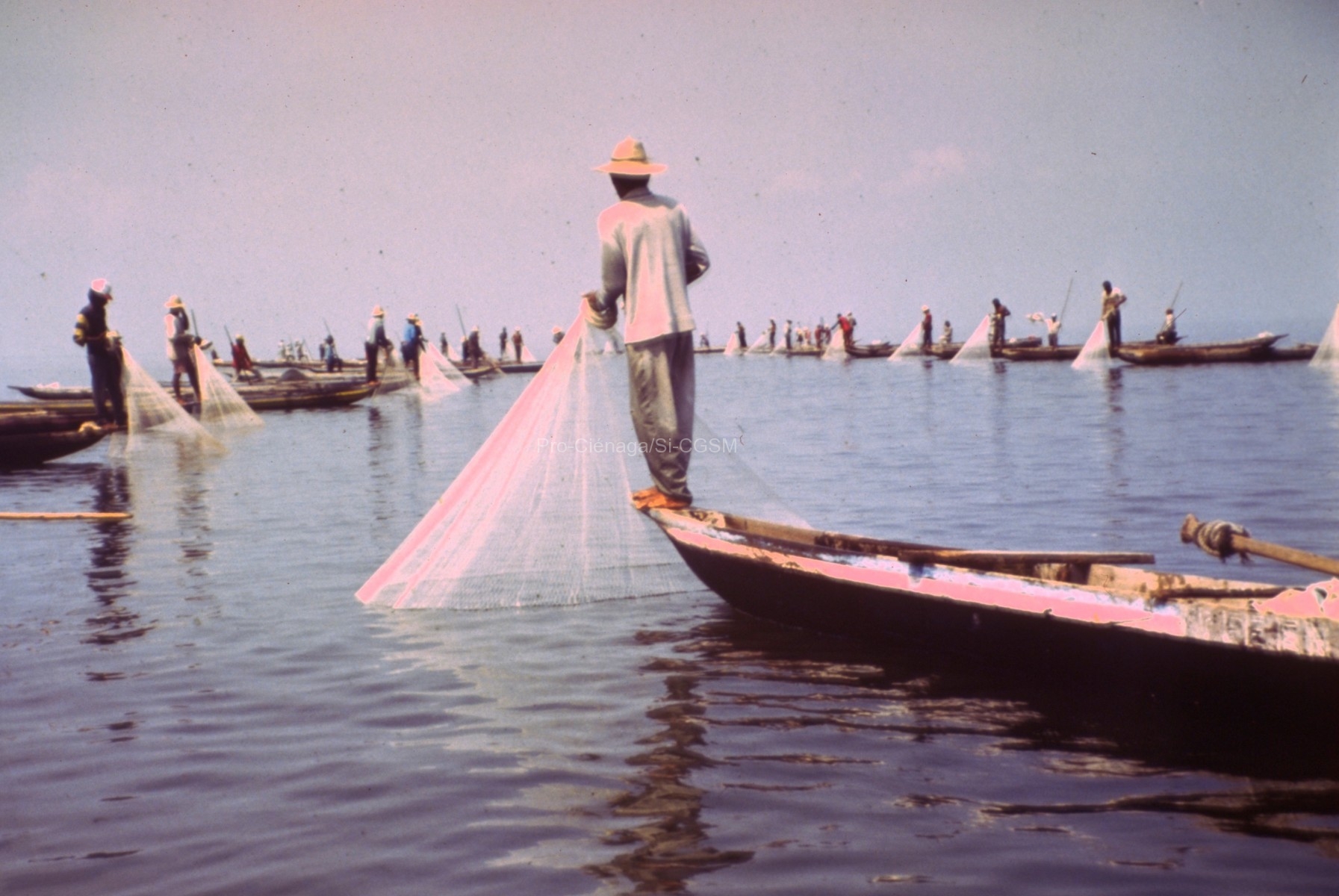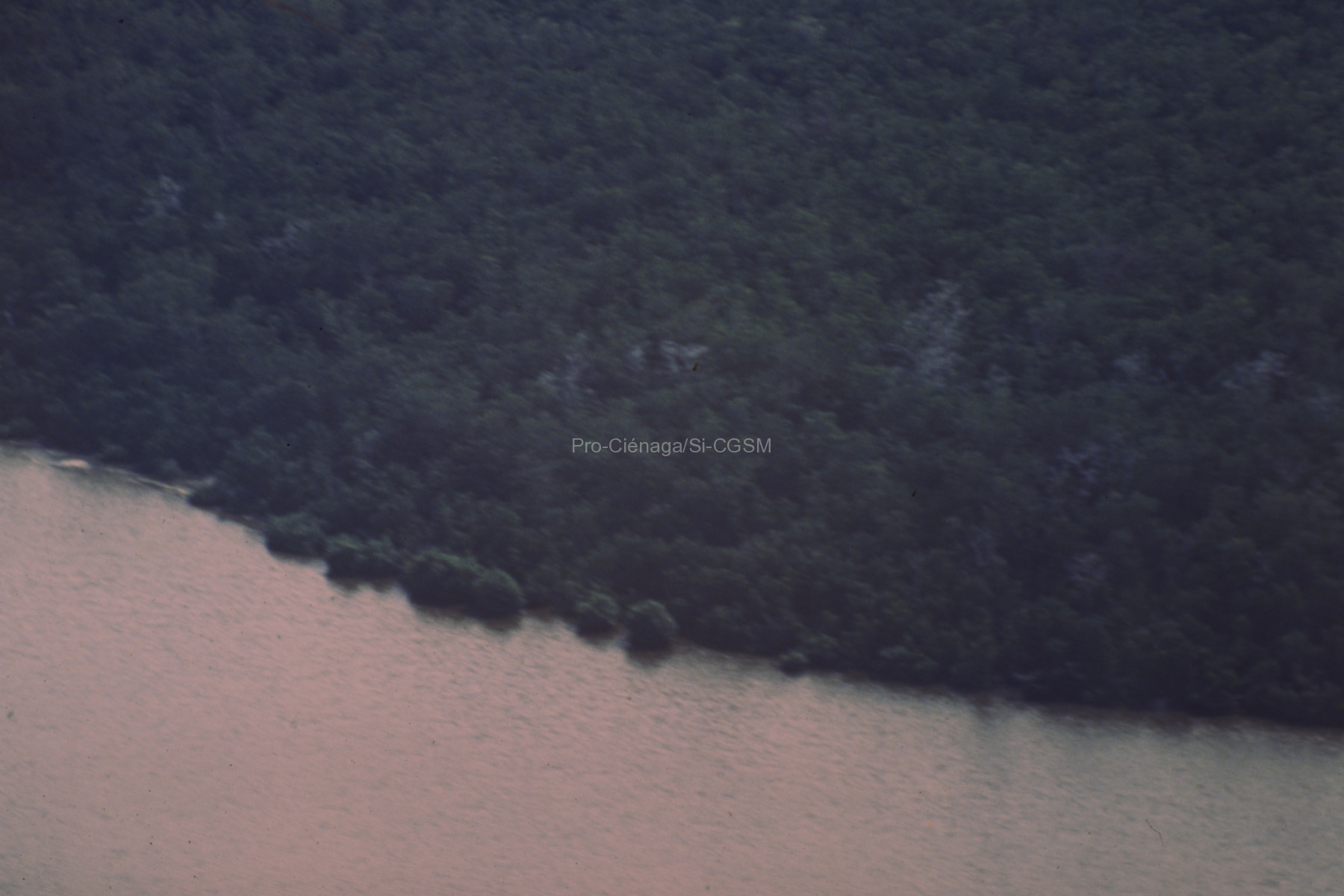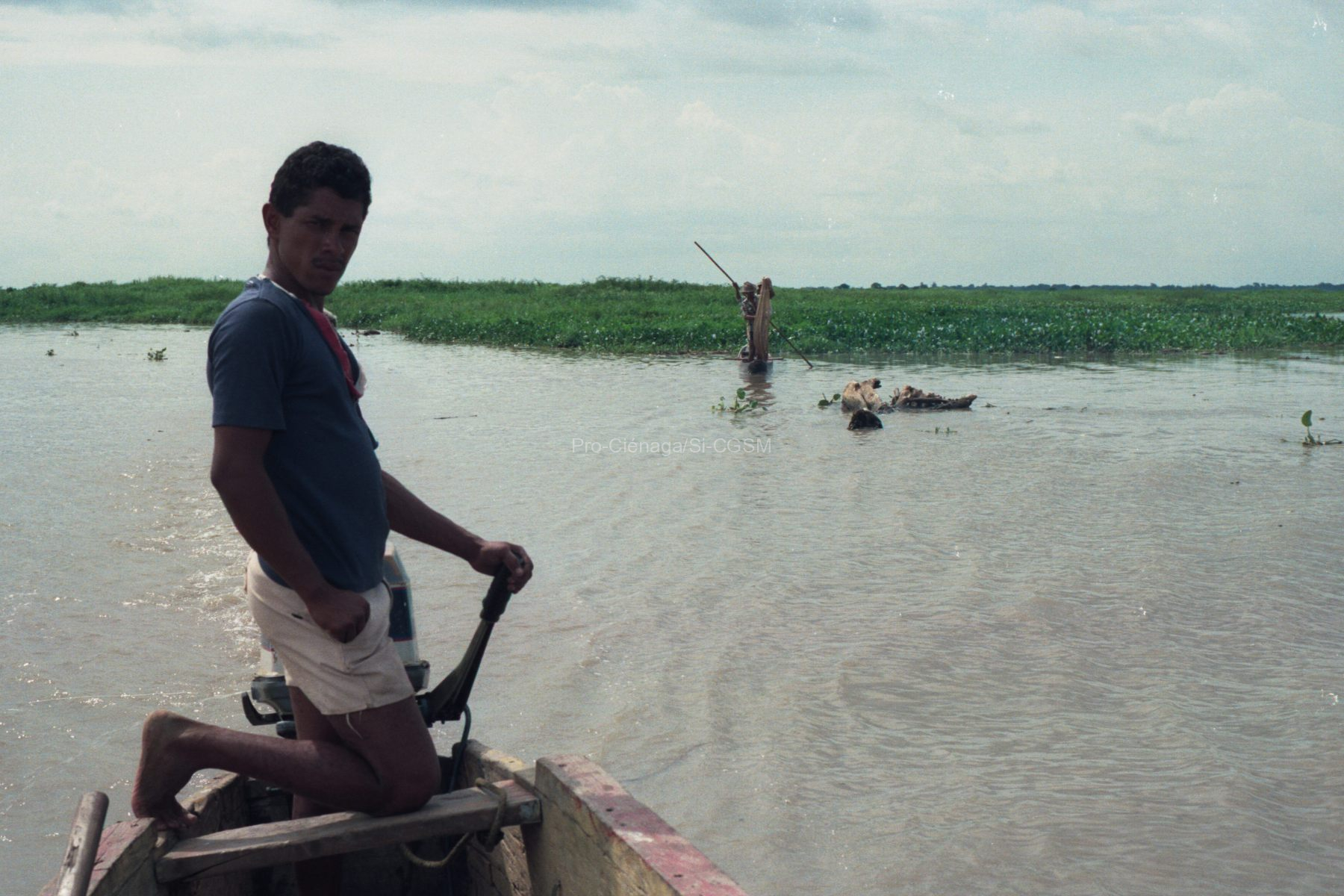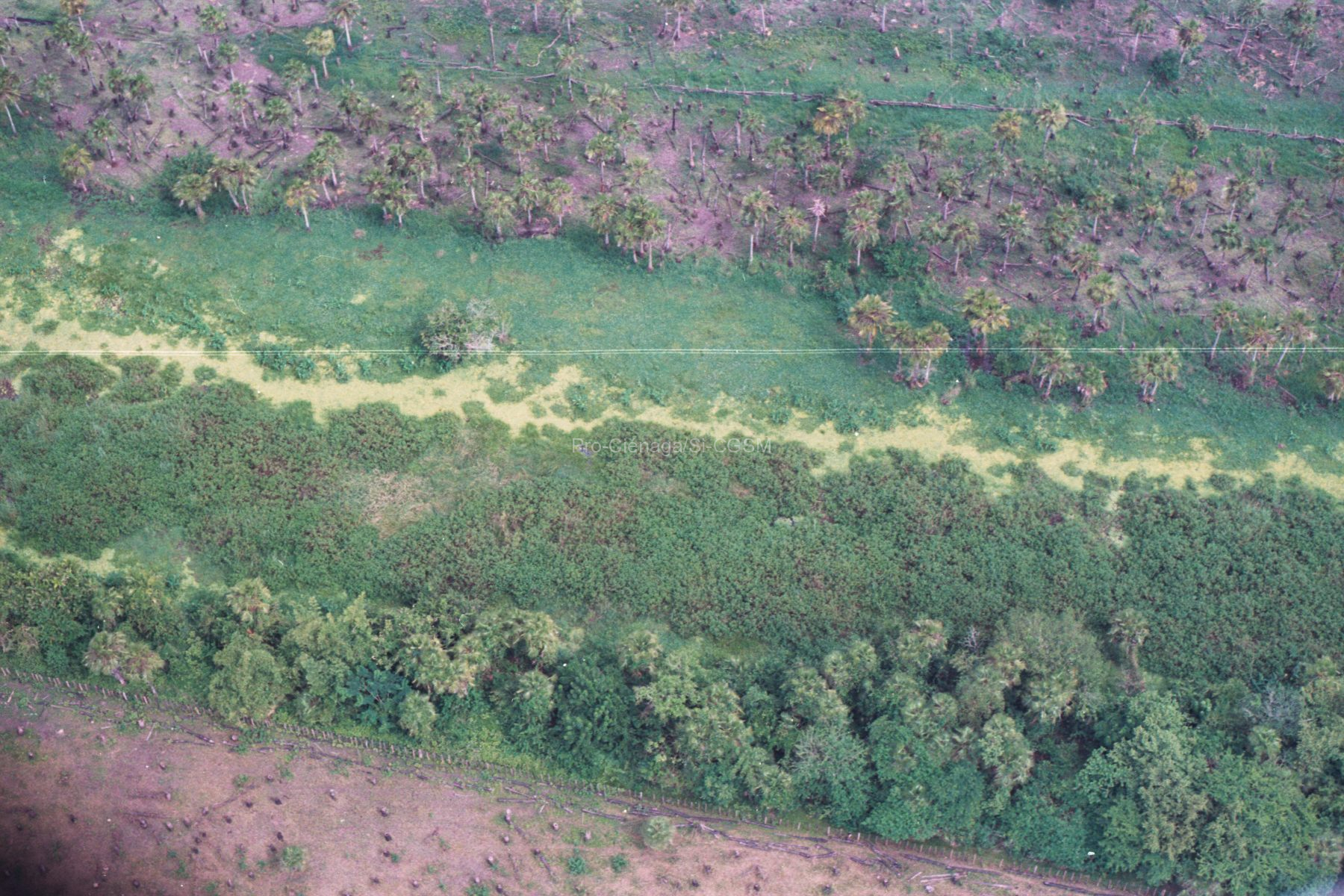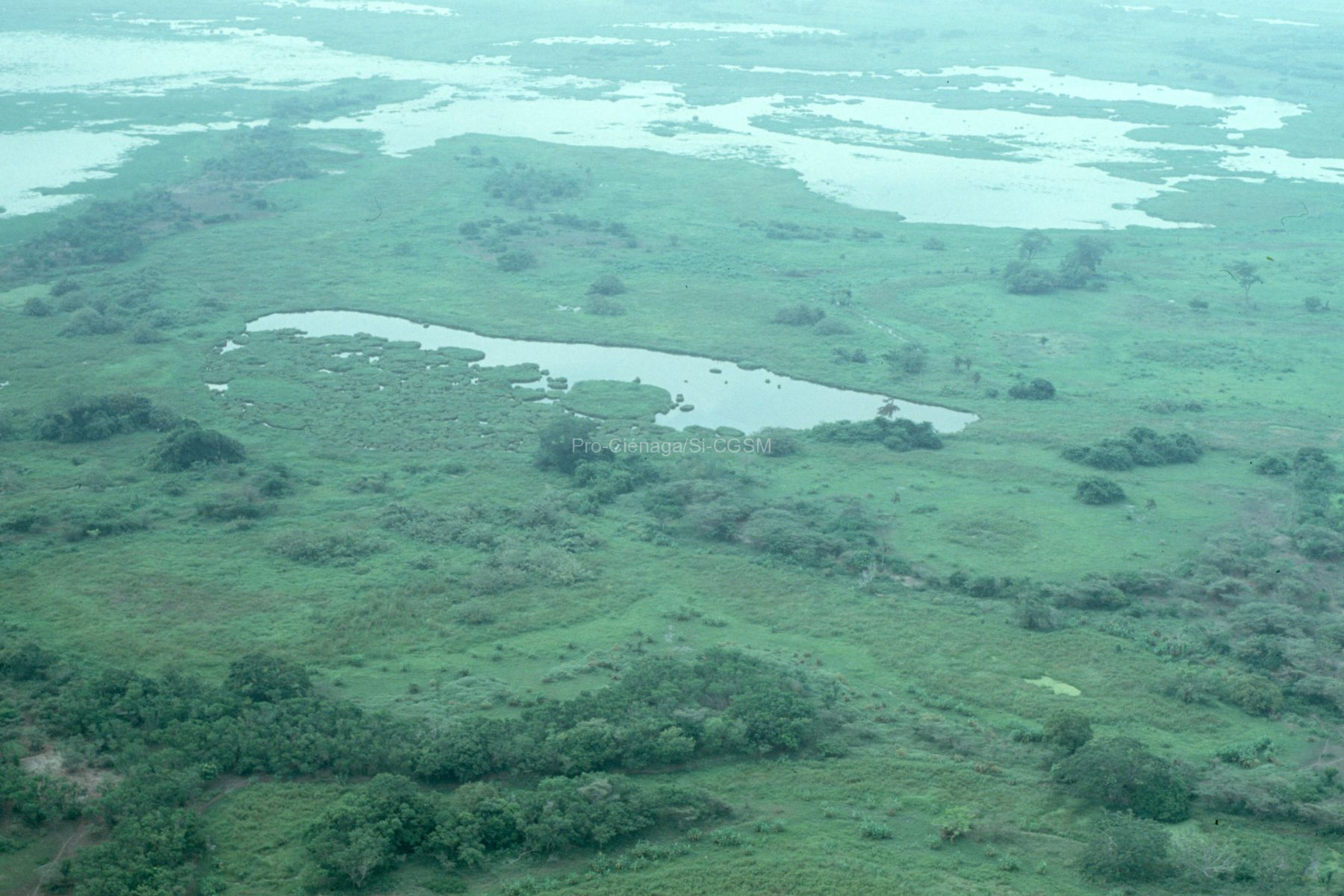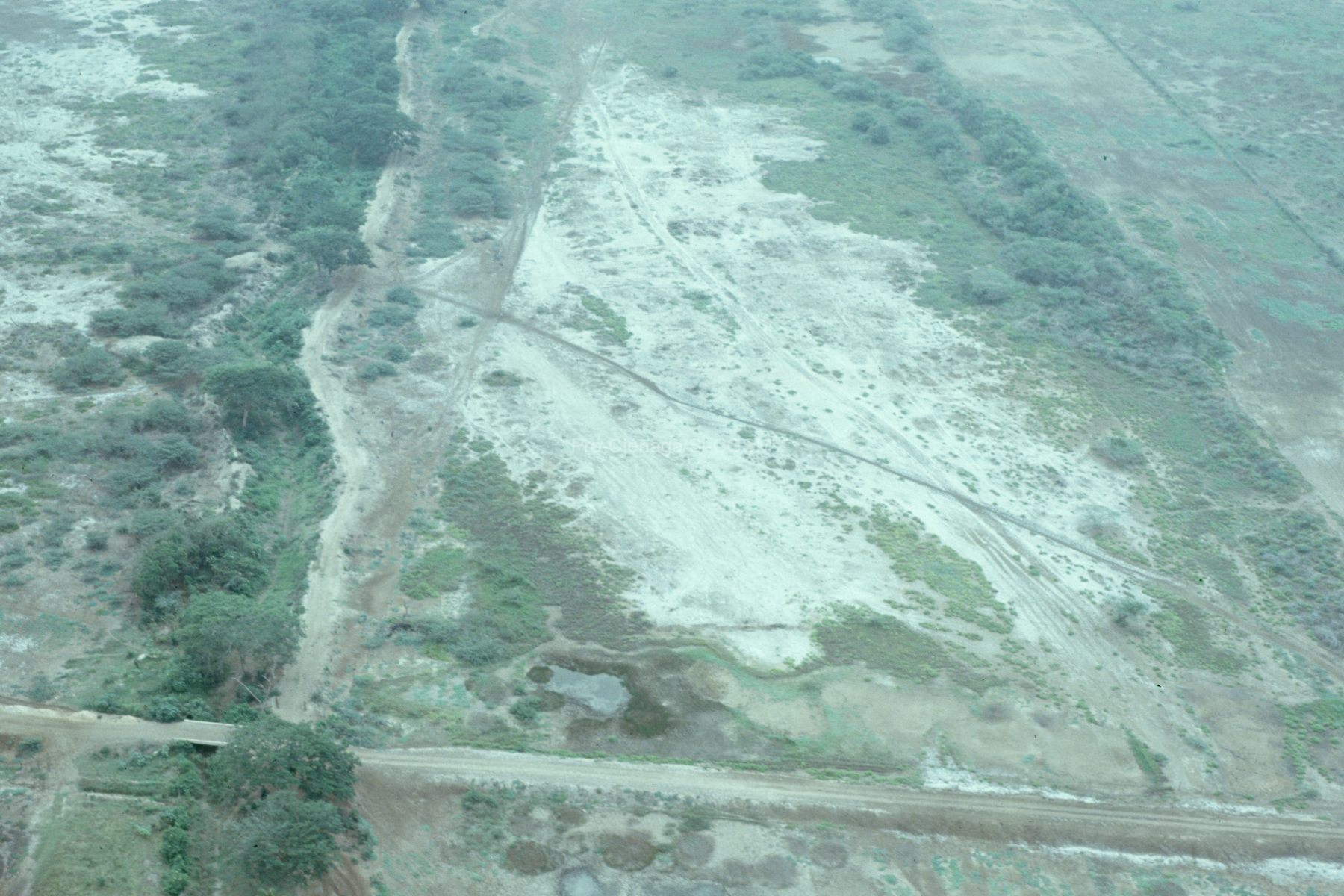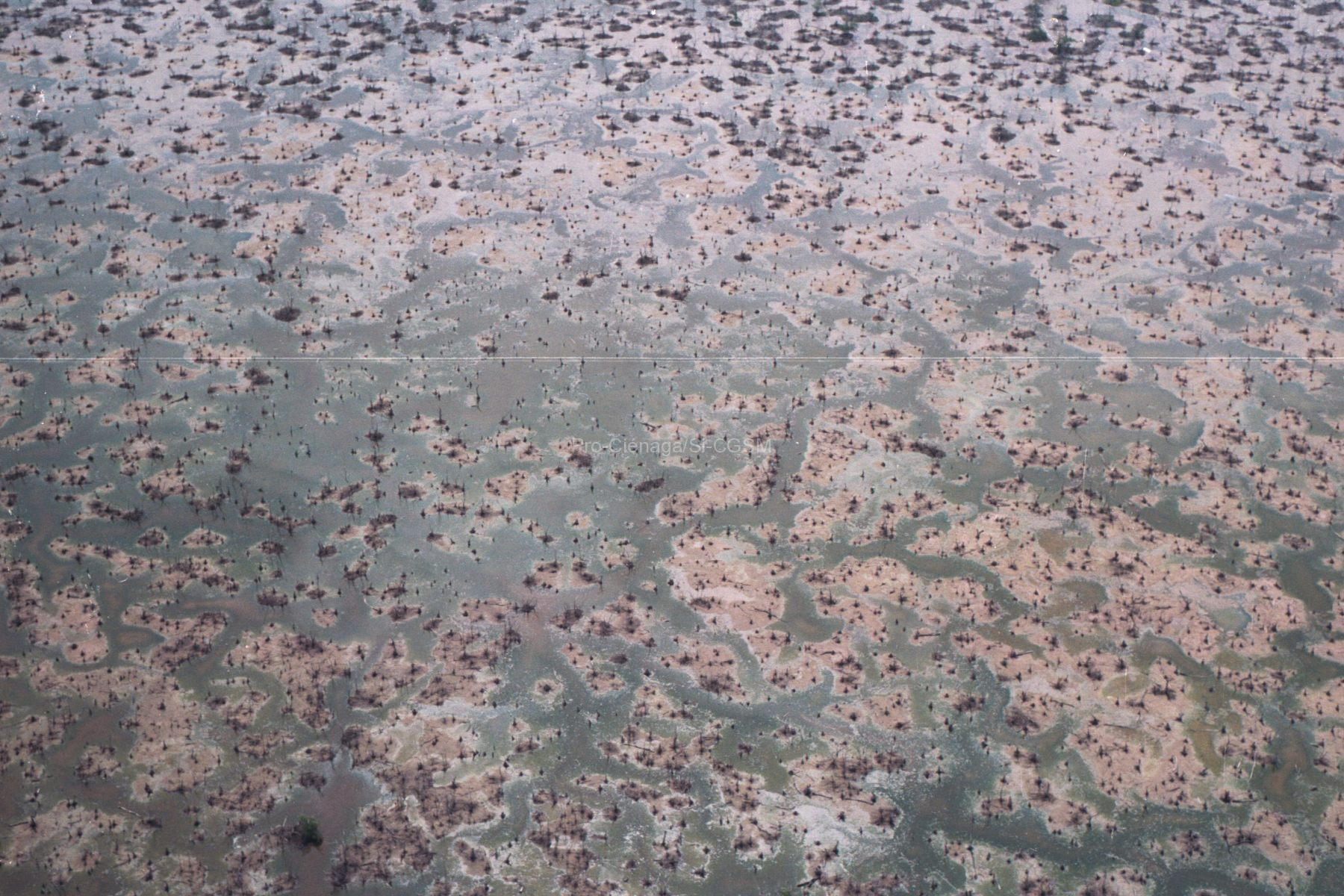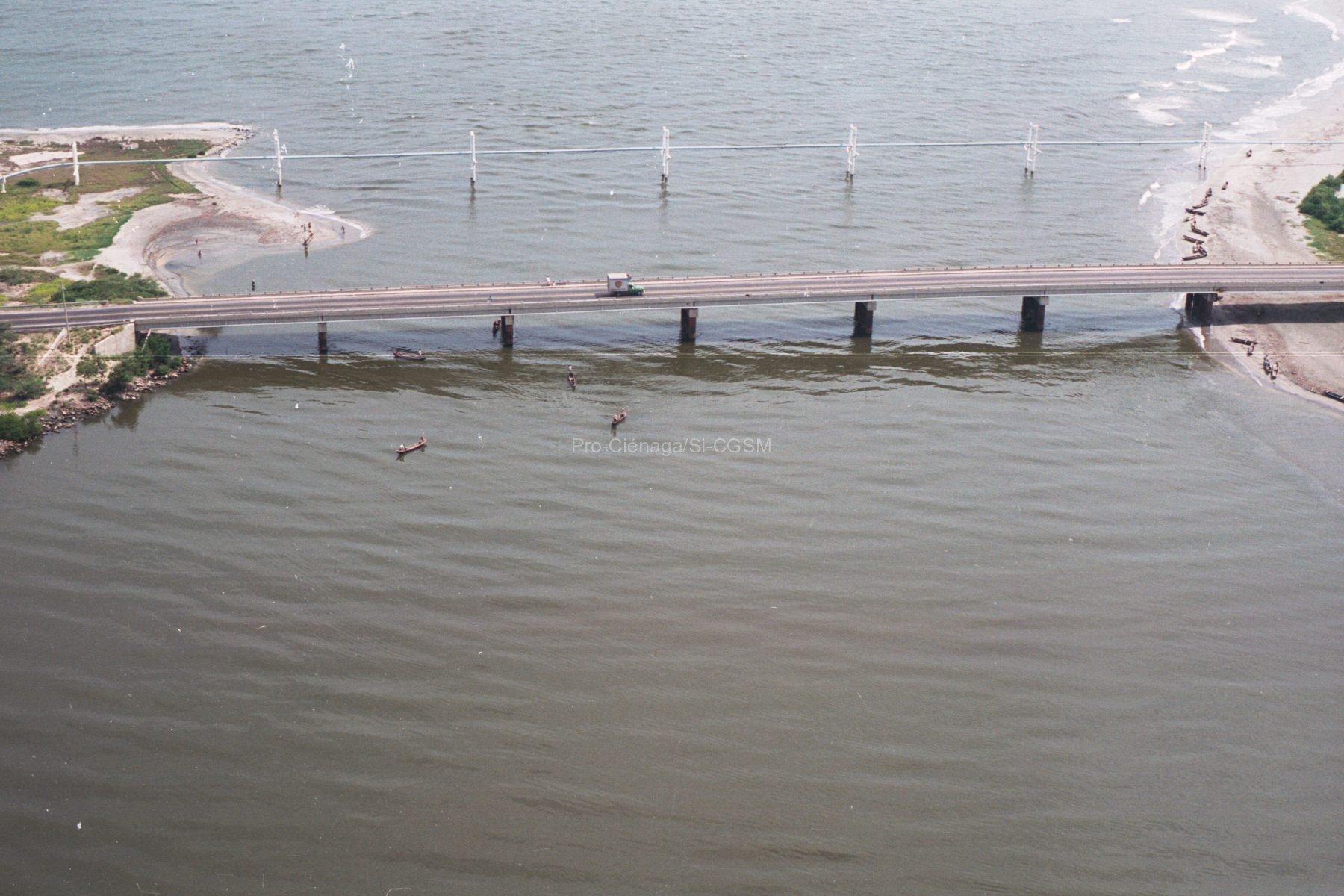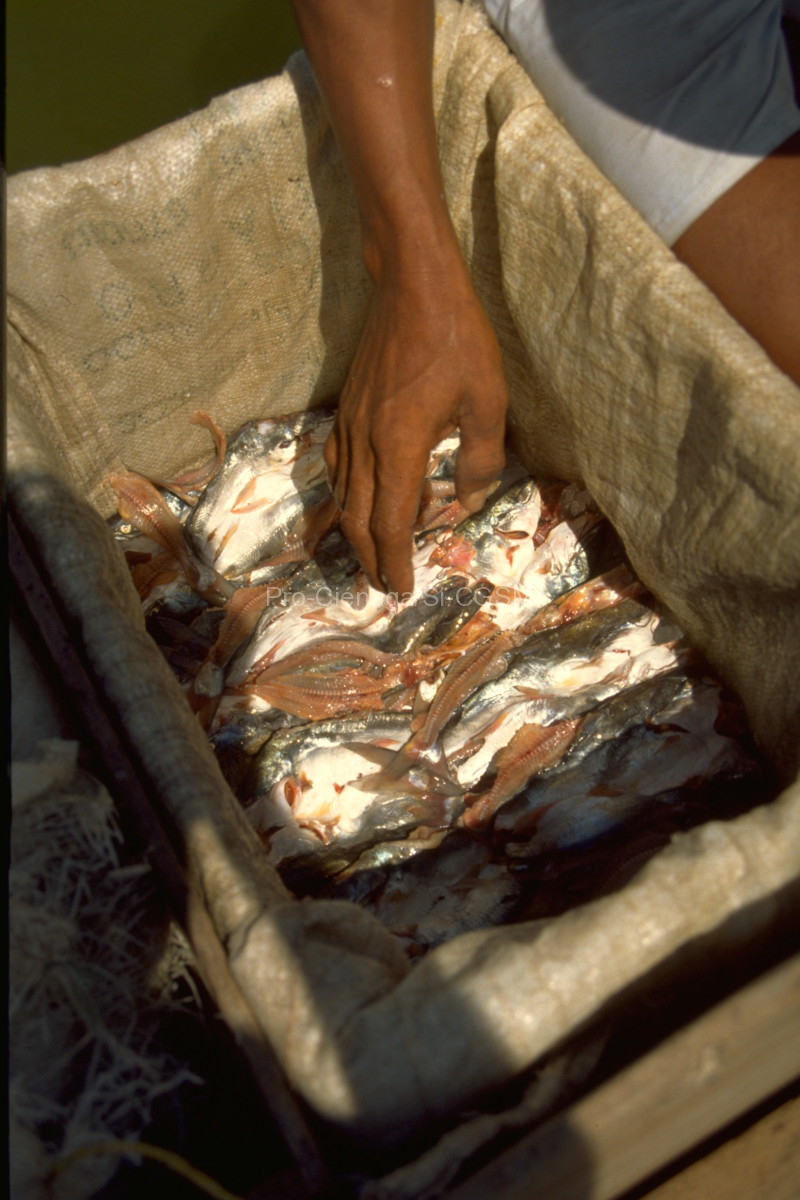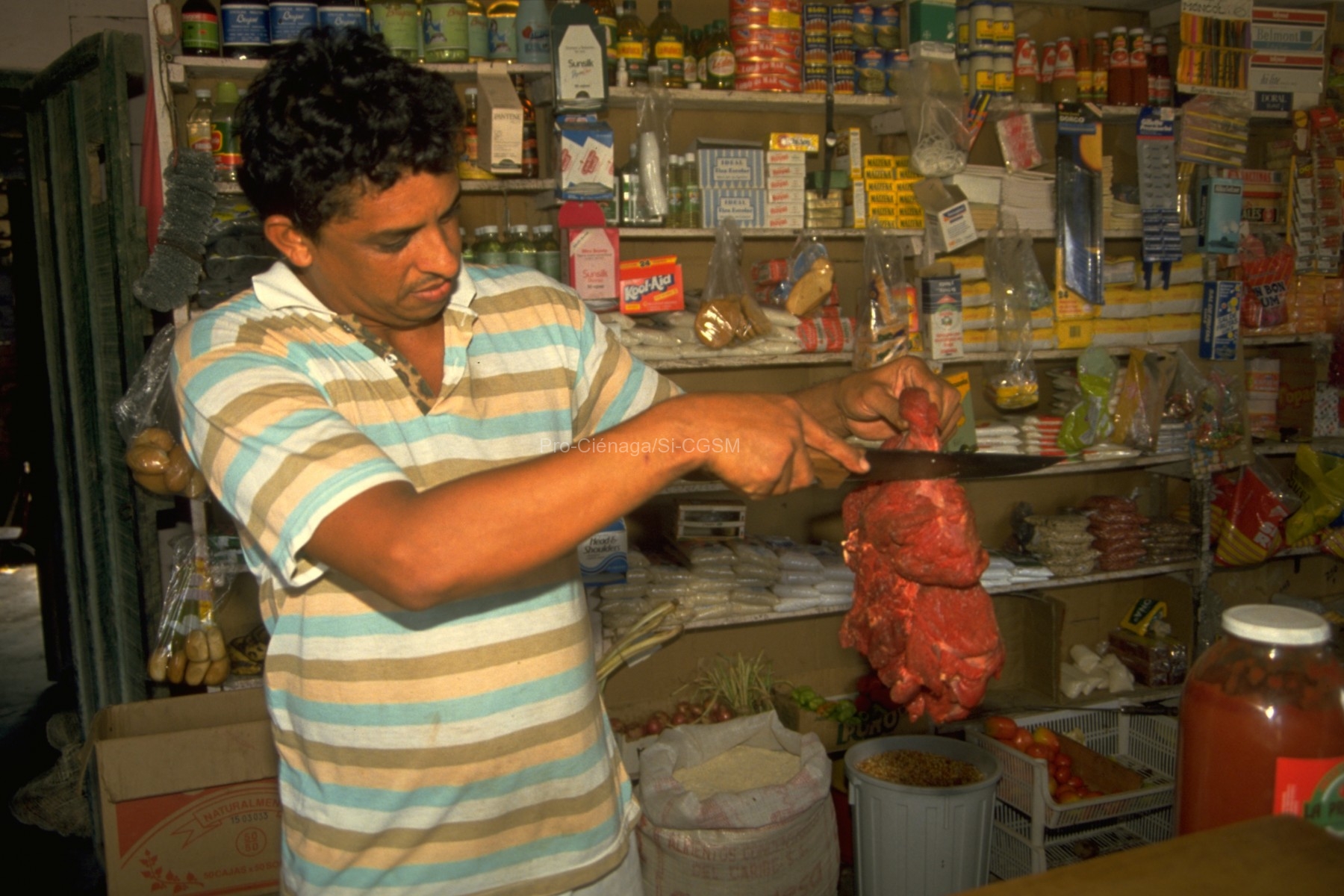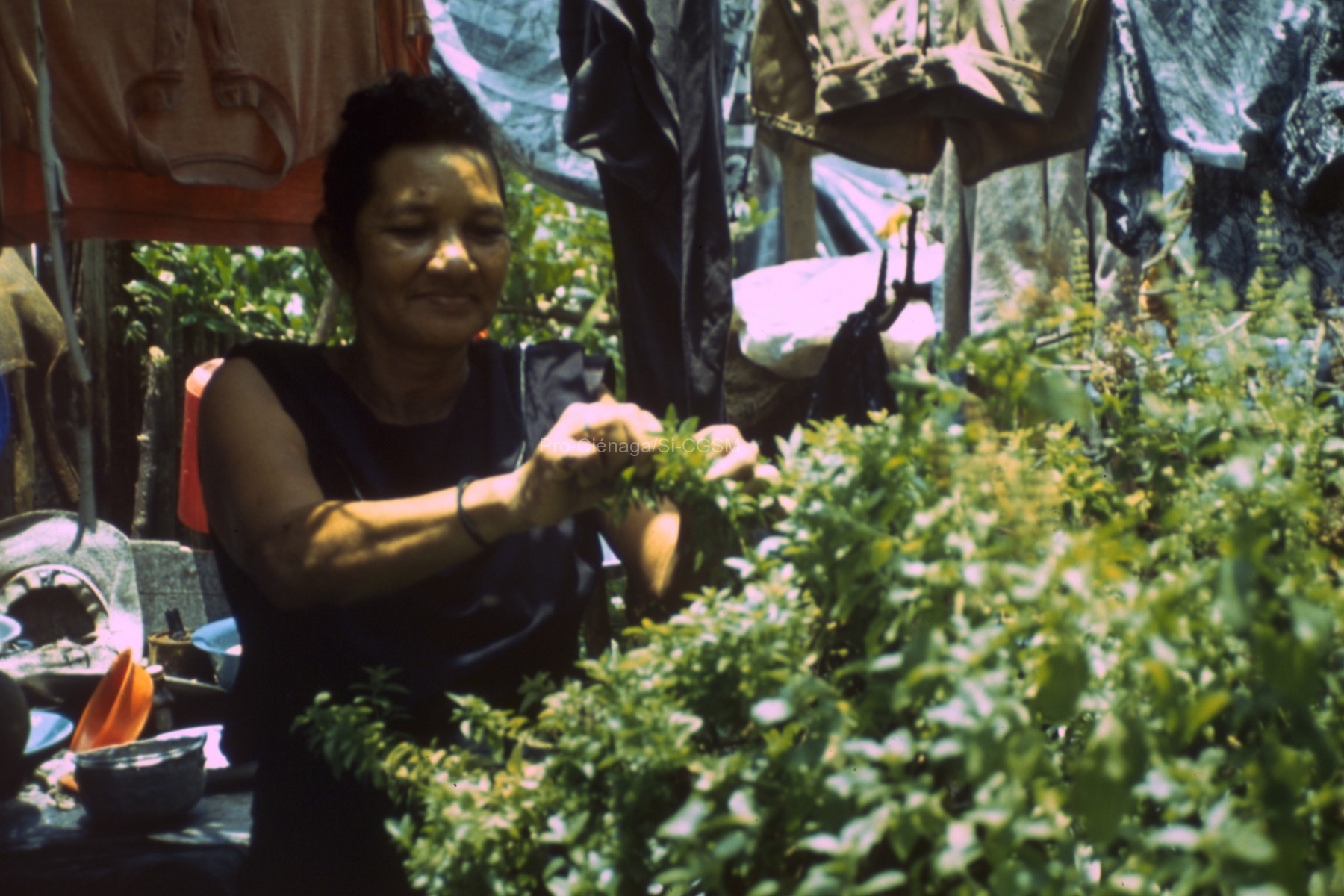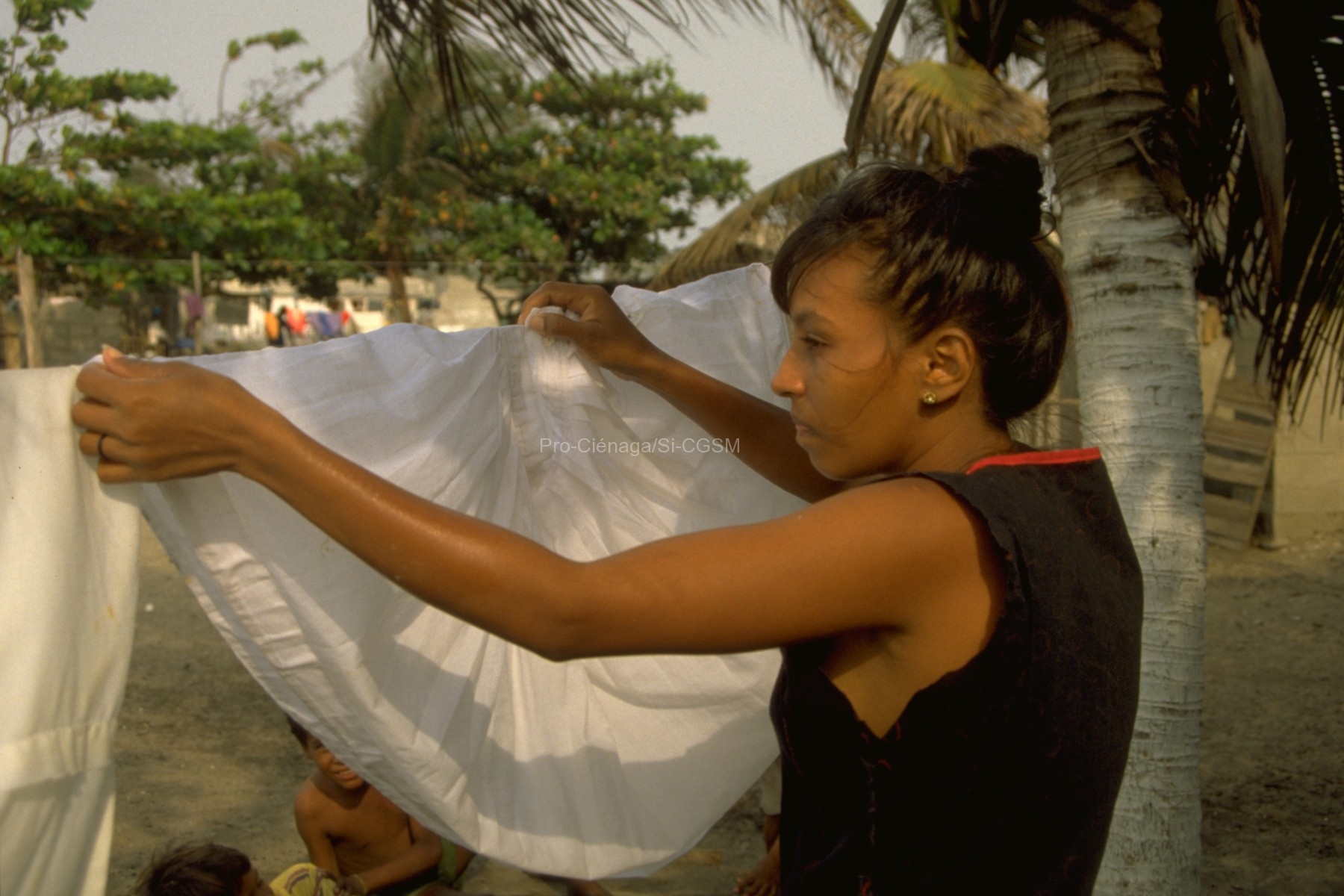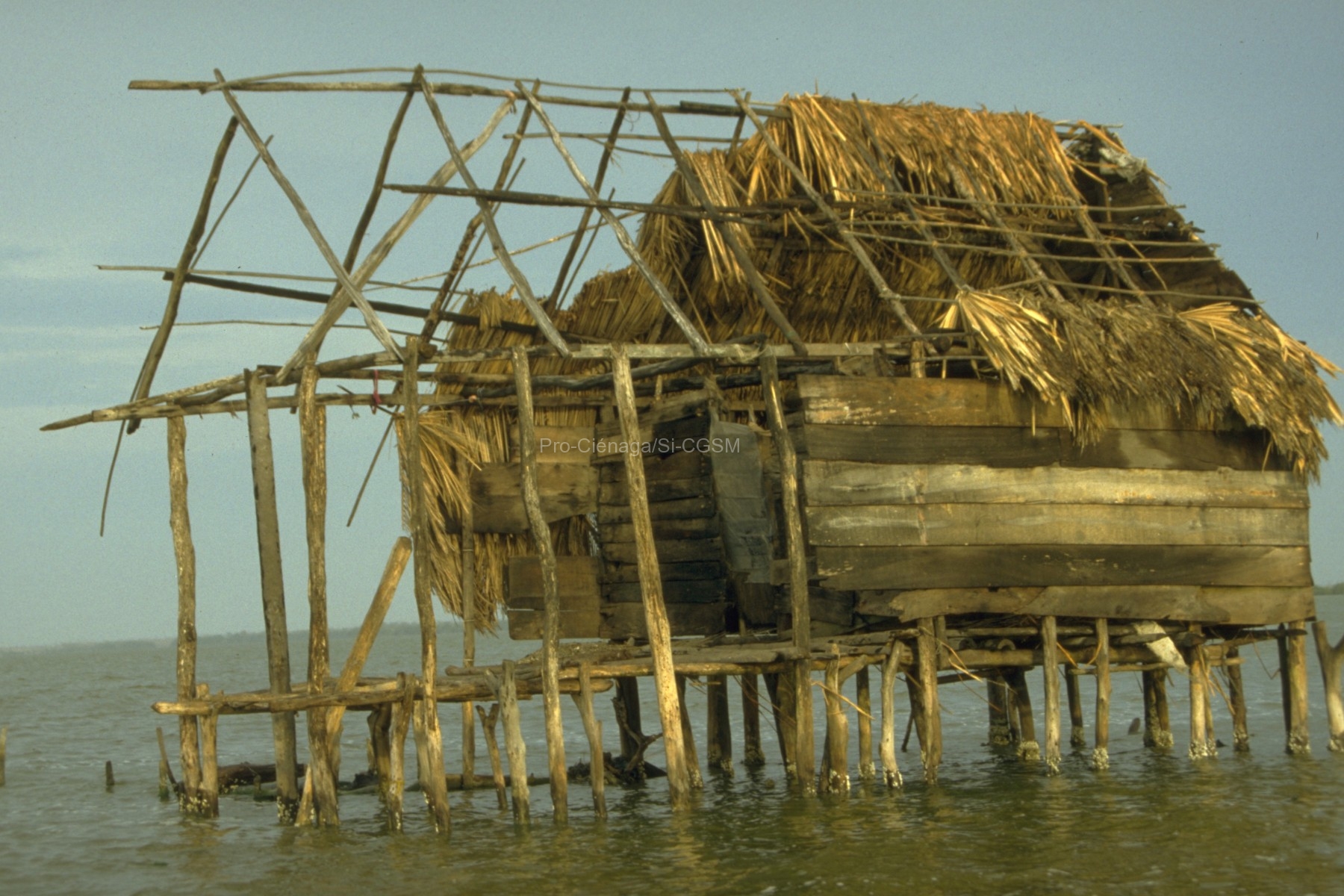Ciénaga Grande de Santa Marta – CGSM, the main Colombian coastal lagoon, is situated in the south Caribbean basin and has a deltaic geomorphology. The water column has high productivity as result of dynamic species succession, nutrients availability, high light intensity, and minimum water temperature variability. This ecosystem constitutes an important habitat for a wide diversity of fish fauna, reptiles, mammals and birds. CGSM fishery supports ecological and social value. Mangrove forest is the most important vegetal coverage in this estuarine complex, variations on salinity soils levels determines the distribution, survival and composition of four mangrove species. The construction of a coastal highway and a levee road along the Magdalena river, has altered the natural flow of marine and fresh waters, causing severe environmental damage to the mangrove-lagoon ecosystem. Different projects have been conducted for the rehabilitation of the CGSM, however, pressures as human population growth that over exploits ecosystem resources; gradual expansion of the agricultural frontier, contamination by lack of sanitary infrastructure in human settlements; waste generated by local agribusiness and lack of continuity and rigor in maintaining channels, continue to cause decrease of mangrove coverage, deterioration of forest, fauna health and quality life of local people.

